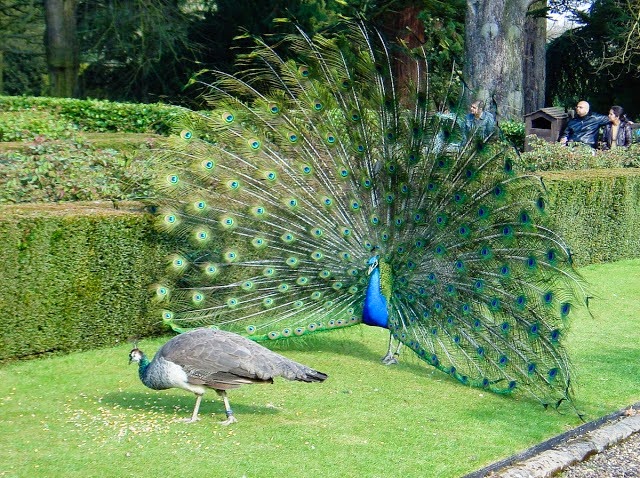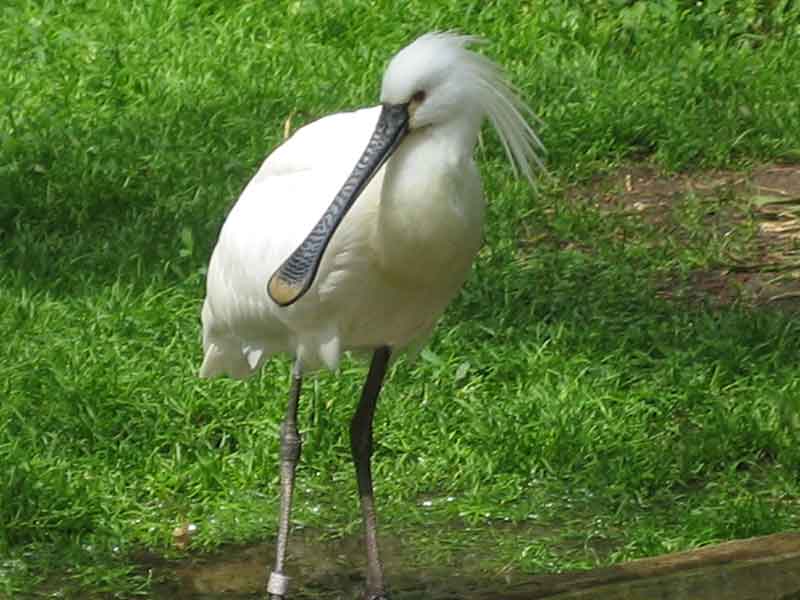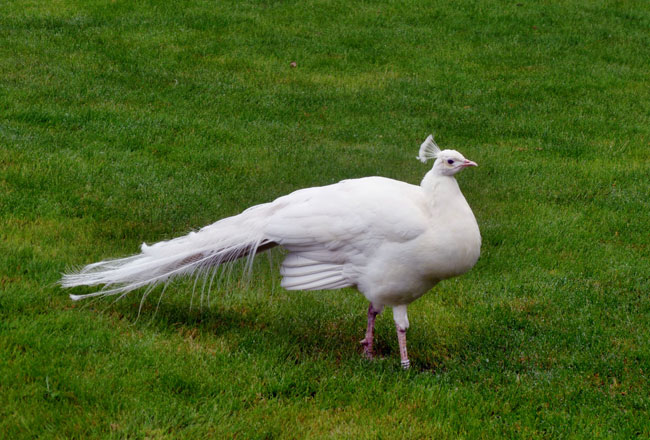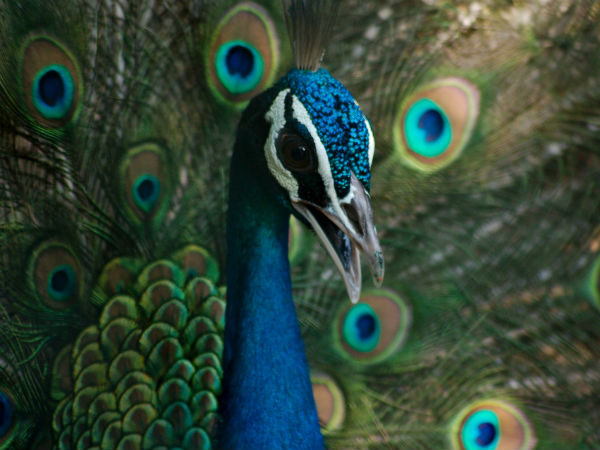Viralimalai Bird Sanctuary
Viralimalai Bird Sanctuary |
About: |
|
The Viralimalai Bird Sanctuary, also known as Viralimalai Wildlife Sanctuary, is a tranquil oasis and a natural paradise for wildlife enthusiasts. Nestled in the small town of Viralimalai, Tamil Nadu, located 30 kilometers from Tiruchirappalli and 40 kilometers from Pudukkottai, this sanctuary is renowned for its large population of wild peacocks, especially India's National Bird, the peacock. Visitors are often greeted with the breathtaking sight of these regal birds displaying their vibrant plumage, particularly during the monsoon season when they spread their feathers in a celebratory dance of nature. The sanctuary is a popular destination, not only for bird watchers but also for those seeking the cultural and religious significance of the nearby Murugan Temple. This sanctuary provides a safe habitat for over 500 peacocks and is believed to host six different species of peafowl, including the rare Palawan Peacock Pheasant, also known as the ‘Tandikan,’ which captivates visitors with its spectacular coloring. From October to April, Viralimalai becomes a hotspot for tourists, drawn to the enchanting display of peacocks in their natural environment. With scenic views and trails surrounding the temple, the sanctuary offers a rare opportunity to observe these majestic birds up close as they roam freely. The monsoon seasons, both summer and winter, add a special charm as the peacocks elegantly welcome the rain by spreading their iridescent feathers, adding to the sanctuary's vibrant atmosphere. |
Location: |
|
Address: Viralimalai Peacock Sanctuary, Tiruchirapalli, Tamil Nadu, India District: Tiruchirapalli Nearest City: Pudukkottai Best Time to Visit: November to February The Viralimalai Bird Sanctuary is nestled in the tranquil town of Viralimalai in Tamil Nadu, India, known for its large population of peacocks and the famous Murugan Temple nearby. Located just 30 kilometers from Tiruchirapalli and 40 kilometers from Pudukkottai, it’s an easily accessible destination for tourists. |
Climate/Weather: |
|
The climate in Viralimalai is typically warm throughout the year, characterized by three main seasons: summer, monsoon, and winter. Summer (March to June): The temperatures can range from 25°C to 40°C. Summers can be hot and dry, so visitors are advised to carry water and wear sun protection if visiting during these months. Monsoon (July to October): The region experiences moderate to heavy rainfall, with temperatures ranging between 24°C and 35°C. The monsoon season brings vibrant greenery to the sanctuary, and peacocks are often seen dancing in the rain. However, occasional downpours may affect outdoor activities. Winter (November to February): This is the most pleasant season, with temperatures between 18°C and 28°C, making it the best time to visit. The cool and comfortable weather attracts a large number of tourists who come to enjoy the natural beauty of the sanctuary. Overall, the ideal time to visit Viralimalai Bird Sanctuary is from **November to February** during the winter season, when the weather is most comfortable for outdoor activities and bird watching. |
History: |
|
The Viralimalai Bird Sanctuary holds cultural and historical significance in Tamil Nadu, primarily due to its association with the **Murugan Temple**, which dates back centuries. Viralimalai has long been revered as a spiritual and natural sanctuary, with the peacock—a bird sacred to Lord Murugan—playing an essential role in local culture and mythology. The sanctuary was officially recognized as a protected area to conserve the natural habitat of the large population of peafowl found around Viralimalai. Over time, the region became popular not only as a religious destination but also as a haven for wildlife enthusiasts and bird watchers. The local community's respect for the peacock population has allowed the birds to roam freely, and conservation efforts have ensured a thriving environment for over 500 peafowl, including rare species. Today, the Viralimalai Bird Sanctuary serves as an excellent example of cultural and natural preservation, drawing tourists and devotees alike to witness its beautiful landscapes and the majestic peacocks that symbolize the sanctuary’s historical and spiritual legacy. |
Interesting Things to Do: |
|
1. Bird Watching: Viralimalai Bird Sanctuary is a paradise for bird watchers. Visitors can spot a variety of peacock species, including the rare Palawan Peacock Pheasant, as well as other native birds in their natural habitat. 2. Visit the Murugan Temple: Located near the sanctuary, the Murugan Temple is a significant pilgrimage site. The temple is surrounded by lush landscapes and often has peacocks roaming freely around its premises, making it a serene and spiritual experience. 3. Photography: With its vibrant peacock population and picturesque surroundings, the sanctuary offers excellent opportunities for photography. Capture the peacocks displaying their colorful plumes, especially during the monsoon season. 4. Nature Walks and Trekking: The sanctuary’s trails offer scenic walks through rocky terrains and lush greenery. A nature walk or a light trek in the area provides a peaceful way to enjoy the sanctuary’s landscapes and wildlife. 5. Picnic Spot: Viralimalai provides an ideal setting for picnics, allowing visitors to relax and enjoy the serene surroundings. It’s a perfect family-friendly activity amidst nature. 6. Explore Local Flora and Fauna: Besides peacocks, the sanctuary is home to diverse flora and smaller wildlife. Exploring the area offers a closer look at Tamil Nadu’s natural biodiversity. |
Interesting Things to Visit: |
|
Murugan Temple: Kodumbalur: Pullamangai: |
Mobile Range Info: |
|
The mobile network coverage in **Viralimalai Bird Sanctuary** is generally reliable, with most major Indian telecom providers offering decent signal strength in and around the area. However, due to the sanctuary’s natural terrain and dense greenery, there may be occasional network fluctuations, especially in more remote parts of the sanctuary. Recommended Providers: Networks such as Airtel, Jio, and BSNL usually have good coverage. Visitors are advised to check with their network providers for coverage maps in the region before visiting. For uninterrupted connectivity, it is advisable to carry a backup power bank, as the mobile battery might drain faster in areas with weaker signals. |
How to Reach: |
|
Located in Viralimalai, Tamil Nadu, the sanctuary is accessible by road, rail, and air, making it convenient for visitors from nearby cities. By Road: Viralimalai is well-connected by road. It is 30 kilometers from Tiruchirappalli (Trichy) and 40 kilometers from Pudukkottai. Visitors can use state-run buses, private buses, or hire taxis to reach the sanctuary. The road journey provides scenic views of Tamil Nadu's countryside, enhancing the travel experience. By Rail: The nearest railway station is **Tiruchirappalli Junction**, located approximately 30 kilometers away. From the station, visitors can take a taxi or a local bus to reach Viralimalai. Trichy is a major railway hub, with good connectivity to cities across India. By Air: The nearest airport is **Tiruchirappalli International Airport**, around 35 kilometers from the sanctuary. The airport has frequent flights to and from major Indian cities like Chennai, Bengaluru, and Mumbai, as well as some international destinations. From the airport, visitors can hire a taxi or take a bus to Viralimalai. Once in Viralimalai, the sanctuary is easy to locate and well-marked, making it a hassle-free destination for tourists. |
Nearest Visiting Places: |
|
1. Murugan Temple, Viralimalai: Located adjacent to the sanctuary, this ancient temple dedicated to Lord Murugan is a popular pilgrimage site. Visitors often explore both the sanctuary and temple in a single visit, enjoying the scenic surroundings and spiritual atmosphere. 2. Rockfort Temple, Tiruchirappalli: About 30 km from Viralimalai, this iconic temple complex is built on a massive rock and offers stunning views of Trichy city. Known for its ancient architecture and historical significance, it is a must-visit for those interested in Tamil Nadu’s cultural heritage. 3. Sri Ranganathaswamy Temple, Srirangam: Located around 35 km from Viralimalai, this is one of the largest functioning Hindu temples in the world. Dedicated to Lord Vishnu, it features impressive Dravidian architecture and draws pilgrims and tourists alike. 4. Kallanai Dam (Grand Anicut): Situated about 50 km from Viralimalai, this ancient dam on the Kaveri River was built by the Chola dynasty and is one of the oldest water-diversion structures in the world. It’s an ideal spot for picnics and offers beautiful river views. 5. Pudukkottai Town: Just 40 km from the sanctuary, Pudukkottai is known for its historical sites, including ancient temples, museums, and palaces. Notable attractions include the Thirumayam Fort and the Pudukkottai Museum, which houses unique artifacts from the region’s history. 6. Jambukeswarar Temple, Thiruvanaikaval: Located approximately 35 km away, this temple is dedicated to Lord Shiva and represents one of the five elements, water. It’s known for its spiritual ambiance and unique architecture, attracting numerous devotees and tourists. |
Nearest Petrol Pump: |
|
For visitors driving to **Viralimalai Bird Sanctuary**, there are several petrol pumps available in and around the area: 1. Indian Oil Petrol Pump - Viralimalai: 2. Bharat Petroleum - NH 38: 3. HP Petrol Pump - Manapparai Road: 4. Indian Oil Petrol Pump - Pudukkottai Road: It’s recommended to refuel in Viralimalai town or at any of these nearby petrol stations, as options may be limited closer to the sanctuary itself. |
Hotels/Lodge/Accommodation: |
|
Visitors to **Viralimalai Bird Sanctuary** can find a variety of accommodation options nearby, ranging from budget hotels to comfortable lodges in nearby towns: 1. Viralimalai Residency: 2. Grand Gardenia, Tiruchirappalli: 3. SRM Hotel, Trichy: 4. Hotel Sangam, Trichy: 5. Pudukkottai Guest House: It is recommended to book accommodation in Tiruchirappalli (Trichy) or Pudukkottai, as they offer a wider range of lodging options with easy road connectivity to Viralimalai Bird Sanctuary. |
Things to Carry: |
|
When visiting **Viralimalai Bird Sanctuary**, it’s essential to pack appropriately to ensure a comfortable and enjoyable experience. Here are some recommended items: 1. Binoculars: For bird watchers, binoculars are essential to observe the peacocks and other birds in their natural habitat from a distance. 2. Camera: Bring a camera or smartphone with a good zoom lens to capture the beautiful peacocks and scenic landscapes. 3. Comfortable Clothing: Wear light, breathable clothing suitable for warm weather, especially during the summer. Long sleeves and pants can also help protect against insects. 4. Hat and Sunglasses: Protect yourself from the sun by wearing a hat and sunglasses, as the sanctuary can get quite sunny during the day. 5. Water Bottle: Stay hydrated by carrying a reusable water bottle, as facilities inside the sanctuary may be limited. 6. Insect Repellent: To prevent insect bites, especially in forested areas, carry insect repellent and apply it as needed. 7. Snacks: Pack light snacks, as food options might not be available within the sanctuary. Avoid leaving any litter behind to protect the environment. 8. Power Bank: Bring a fully charged power bank to keep your phone or camera powered, as you might be taking numerous photos. 9. First Aid Kit: Carry a small first aid kit with essentials like band-aids, antiseptic, and pain relievers for any minor injuries or discomforts. 10. Guidebook or Map: Having a guidebook or map of the sanctuary can help you navigate and learn more about the sanctuary's flora and fauna. By carrying these essentials, you can fully enjoy your visit to Viralimalai Bird Sanctuary while staying comfortable and prepared. |
Tips & Suggestions: |
|
To make the most of your visit to **Viralimalai Bird Sanctuary**, consider the following tips and suggestions: 1. Visit Early in the Morning: Arrive early for the best chance to spot peacocks and other birds, as they are more active during the cooler morning hours. 2. Respect Wildlife: Observe the birds and animals from a safe distance, avoid making loud noises, and refrain from feeding them. This helps maintain the sanctuary’s natural environment. 3. Wear Comfortable Walking Shoes: The sanctuary has trails and rocky terrains, so wearing sturdy, comfortable shoes will make it easier to explore the area. 4. Stay Hydrated: Carry enough water, especially during warmer months, as facilities within the sanctuary may be limited. 5. Avoid Littering: Help preserve the sanctuary by not leaving behind any waste. Bring a small bag to carry any trash back with you. 6. Best Time to Visit: Plan your trip between November and February for the most comfortable weather and optimal bird-watching experiences. 7. Check Mobile Network Coverage: While some parts of the sanctuary have decent mobile coverage, network strength may vary. Plan accordingly if you rely on navigation apps. 8. Be Mindful of Monsoon Season: During the monsoon months (July to October), trails may be slippery. Exercise caution if you visit during this time. 9. Hire a Guide if Possible: Local guides can enhance your experience by providing insights into the sanctuary's biodiversity and the cultural significance of the Murugan Temple. 10. Plan Nearby Visits: Viralimalai Bird Sanctuary is close to other attractions like the Murugan Temple and Tiruchirappalli, so plan your itinerary to explore nearby spots as well. Following these tips will help you enjoy a safe, respectful, and fulfilling visit to Viralimalai Bird Sanctuary. |
Help Line/Phone Number: |
|
For any assistance or inquiries related to **Viralimalai Bird Sanctuary**, you can contact the following numbers: Tourism Information Center - Tiruchirappalli: +91-431-2413797 Forest Department Office - Viralimalai: +91-431-2215685 Nearest Police Station - Viralimalai: +91-431-2677200 Emergency Services: Dial 112 (for all emergencies, including medical and police assistance) It's recommended to save these numbers before your visit for any immediate assistance or information. |
Viralimalai Bird Sanctuary |
| Sittanavasal: |
| Located at a distance of 58-km from Trichy is Sittanavasal, a site of an ancient Jain monastery with fine fresco paintings in a rock cave. Many of them are typical of the 9th century Pandyan period and include exquisitely detailed pictures of animals, fish, ducks, people gathering lotuses from a pond and two dancing figures. There are also inscriptions dating back to the 9th and 10th centuries. Fresco paintings from the 7th century can be seen on the ceiling of the Ardhamandapam.There are many pre-historic burial sites around Sittanavasal and among the relics unearthed are burial urns, cists and Kurangupatarai.......................more |
| Rock Fort Temple : |
| The Rock Fort temple complex in Tiruchirappalli is a collection of three temples - the Manikka Vinayakar temple at the foot of the hill, the Uchhi Pillayar Koyil at the top of the hill and the Taayumaanavar Koyil (Shivastalam) on the hill. This Shivastalam is a rock cut temple on a hill and is the most prominent landmark in Tiruchirappalli that can be reached by a flight of steps on the way to the famous Ucchi Pillayar temple............................more |
| Sri Ranganathaswami Temple : |
| Located 7-km from Trichy is Srirangam, the abode of the Supreme Lord, Sri Ranganatha, the reclining form of Lord Vishnu. The temple of Ranganatha, the largest in India, is of particular reverence to all Hindus. Srirangam is also listed as one of the Nava Graha Sthalas, or temples representing the planets.................................more |
| Jambukeshwara Temple: |
| Dedicated to Lord Shiva, the Jambukeshwara temple exhibits beautiful carvings on its external walls. A stream flows through the temple in which the main deity is partly submerged. The name Jambukeshwara is derived from the legend according to which it used to be worshipped by elephants...............................more |





